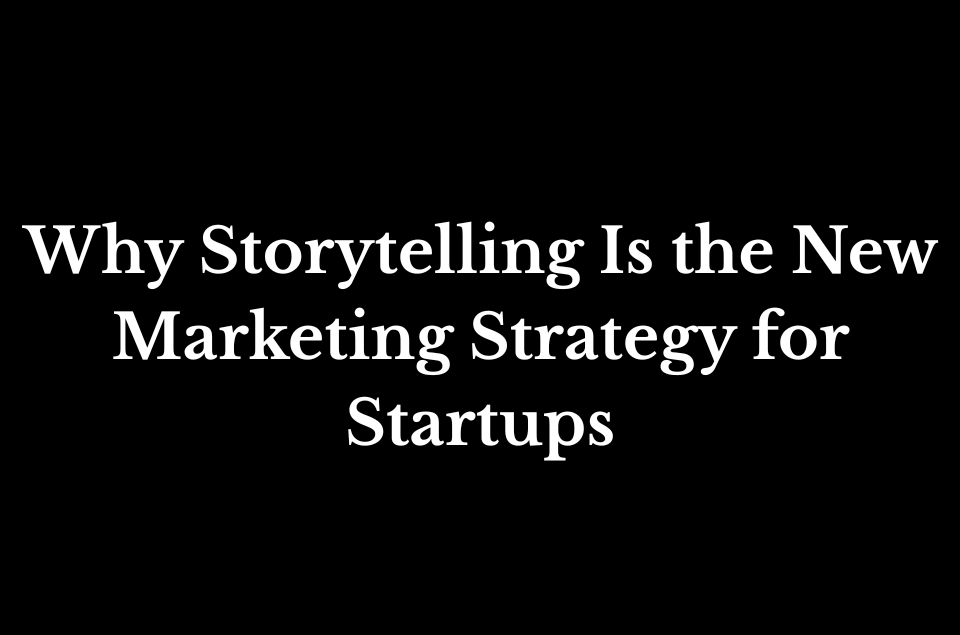In today’s fast-paced and content-saturated digital world, traditional marketing strategies are no longer enough to make a lasting impression. Customers are bombarded with ads, pop-ups, and promotional messages at every corner of the internet. What stands out now is authenticity. And that’s exactly where storytelling comes into play. For startups seeking to build trust, resonate emotionally with audiences, and create a brand that sticks—storytelling is not just an option; it’s the strategy.
This long-form article explores why storytelling is the new marketing strategy for startups, and how leveraging a dedicated startup storytelling platform can turn founders into thought leaders and brands into movements.
Table of Contents
ToggleWhat Is Storytelling in the Startup Context?
Startup storytelling isn’t just about narrating the company’s history. It’s about weaving a compelling narrative around the vision, mission, values, challenges, and wins that make your startup relatable and human.
Key Elements of Startup Storytelling:
- The Founder’s Journey
- The Problem-Solution Narrative
- Customer Transformation Stories
- Team and Culture Spotlights
- Product Evolution
Why Storytelling Works for Startups
1. Builds Trust and Authenticity
People don’t buy products—they buy into the people and purpose behind them. Storytelling humanizes your brand and builds an emotional connection.
2. Simplifies Complex Ideas
Startups often operate in innovative, tech-heavy, or niche sectors. Storytelling helps translate these ideas into simple, relatable narratives.
3. Boosts Retention and Recall
Research shows that messages delivered in story form are 22 times more memorable than facts alone.
4. Inspires Action
Well-crafted stories trigger emotional engagement, which leads to conversions, shares, and word-of-mouth marketing.
5. Drives Organic Growth
Search engines love long-form, engaging, user-focused content. Stories published on a startup storytelling platform often rank high on Google, driving traffic and leads.
How to Craft a Compelling Startup Story
1. Define Your Why
Why did you start? What problem moved you so deeply that you had to solve it? Authenticity starts here.
2. Know Your Audience
Tailor your story to resonate with the investors, customers, or media you want to reach.
3. Create Conflict and Resolution
Every great story has a struggle and a solution. Highlight your startup’s challenges and how you overcame them.
4. Show, Don’t Just Tell
Use testimonials, case studies, and visual storytelling (photos, video) to show your journey.
5. Update Regularly
Your startup story evolves. Publish milestones, pivots, new launches, and user success stories consistently.
Best Channels to Share Your Startup Story
1. Your Website (About Us Page / Blog)
Your own domain is the first place your brand narrative should live.
2. Social Media (LinkedIn, Twitter, Instagram)
Micro-stories and founder perspectives work best here.
3. PR and Media Features
Being featured on a reputed startup storytelling platform lends authority and SEO value.
4. Pitch Decks and Investor Presentations
Investors want to know the people and passion behind the product.
5. Startup Communities and Newsletters
Reddit, Product Hunt, and Slack groups are great for organic exposure.
Case Studies: Startups That Succeeded Through Storytelling
1. Airbnb
They didn’t sell “rooms”—they sold “belonging anywhere.” Their story connected hosts and travelers emotionally.
2. Zerodha (India)
Their founder’s story of bootstrapping the business during a financial crisis resonated with Indian millennials.
3. BoAt Lifestyle
From a cluttered electronics market, they carved a niche by building a lifestyle brand story that appealed to youth and music lovers.
4. Dunzo
Their quirky and hyper-local storytelling made on-demand delivery fun and engaging.
Storytelling in the Age of AI & Google SGE
What is Google SGE?
Google’s Search Generative Experience (SGE) highlights content that is original, user-centric, and contextually rich. AI-generated overviews often pull data from well-structured content.
Why Storytelling Wins in SGE:
- Semantic Relevance
- Natural Language
- Engagement Signals (Time on Page, Shares)
- Topical Authority
Startups featured on an SEO-optimized startup storytelling platform have a better chance of appearing in AI summaries, featured snippets, and related searches.
How ScoopEarth Is Leading Startup Storytelling in India
ScoopEarth has emerged as India’s preferred platform for startup storytelling. It focuses on:
- Founder interviews
- Startup success journeys
- Emerging startup features
- Case studies and deep dives
- Industry-specific storytelling
By publishing on ScoopEarth, startups gain access to:
- High-quality backlinks
- Google ranking exposure
- LinkedIn and Twitter amplification
- Investor eyeballs
- Organic media coverage
Founders can easily contribute, collaborate, or get featured on this dedicated startup storytelling platform with editorial support.
FAQs – Storytelling as a Marketing Strategy
Why is storytelling important for startups?
Because it builds emotional connections and trust, which drive engagement and conversions.
What type of content should I include in my story?
Founder journey, problem-solution narrative, customer testimonials, and brand milestones.
How long should a startup story be?
800–2,000 words for blog posts or media features. Video or social content can be shorter.
How often should I update my startup story?
Quarterly updates with milestones, product launches, and team growth are ideal.
Where should I publish my story?
Your website, social media, newsletters, and platforms like ScoopEarth.
Does storytelling help with SEO?
Absolutely. Long-form narrative content ranks well and attracts backlinks.
Is it okay to show failures in the story?
Yes. Vulnerability creates relatability. Authenticity is more powerful than perfection.
How can I be featured on ScoopEarth?
Visit scoopearth.in and submit your story or contact the editorial team.
What media types work best with storytelling?
Blog posts, interviews, videos, and social media reels all work great.
Can storytelling help attract investors?
Yes. A compelling narrative demonstrates clarity of purpose and market insight.
Conclusion
In the era of algorithms and attention scarcity, human connection is your startup’s superpower. Storytelling bridges that gap. It transforms features into emotions, products into experiences, and startups into beloved brands.
If you’re an early-stage founder, don’t just build—share. Don’t just pitch—connect. And most importantly, don’t just market—tell your story.
By choosing the right startup storytelling platform, you ensure that your journey is not only heard but celebrated and remembered.
Because in the world of startups, the best stories always win.
